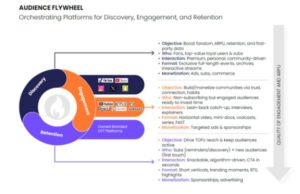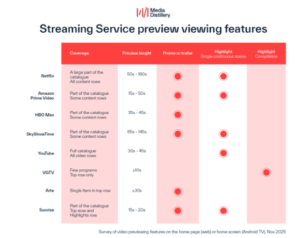By Chris Clarke, CEO, Cerberus Tech
Cricket, like many other sports, has been seriously impacted by the social distancing restrictions imposed by the pandemic. The postponement and cancellation of matches at the height of lockdown, through to the more recent challenges of positive Covid tests, all caused a huge amount of disruption.
In May 2021, The England & Wales Cricket Board (ECB) announced a loss of 16.1 million pounds ($22.78 million) for the past year, with revenue dropping while Covid cases rose. Despite the worst-case scenario for the sport being avoided with a full programme of successful international cricket during summer 2020, teams, organisers and broadcasters have endured their fair share of upheaval over the last year and a half.
Predicting the Unpredictable
One of the challenges which goes along with all live sports during the pandemic, is the inability to effectively plan ahead. Alongside the logistics involved when managing short notice changes to matches and subsequent booking alterations, international teams have been subject to a variety of last-minute shifts, which have left content owners and broadcasters scrambling to adjust.
That said, cricket broadcasters are no strangers to some of the uncertainties that regularly accompany live matches. Unlike fixed-duration sports, the length of cricket cannot always be reliably predicted, so the need for some flexibility is to be expected. Unfortunately, this isn’t always possible with satellite and fibre delivery. Often broadcasting capacity needs to be overbooked, in order to safeguard against matches running longer than expected.

The Importance of Quick Implementation
The challenges facing international cricket were highlighted recently when our team was tasked with quickly turning around a live delivery request for six separate events from the Sri Lanka vs England Cricket tour.
Our team was approached by the national television network, The Sri Lanka Rūpavāhinī Corporation (SLRC), following referrals from Sri Lanka Telecom (SLT) and Dialog TV (DTV), a direct broadcast satellite pay TV service provider based in Sri Lanka. SLRC’s initial request was to pick up and transport a feed from BT Tower and our team advised delivery of a main and backup h.264 encoded linear Zixi feed to the broadcast partner.
Even though the live event deadline was just three days after our initial conversations with SLRC, we were able to turn things around without any issues. BT Tower pick-up details were provided the day before each match, and the nature of IP delivery meant that the team could remain responsive throughout the entire process. As SLRC is well-established, the necessary hardware set-up was already in place to enable all content to be received in a Zixi format. The Infrastructure as a Service (IaaS) workflow to transport the feeds took less than an hour to deploy and could be connected at the start of each match. By using a protocol agnostic approach to delivery infrastructure, IP engineers can adapt to any broadcast requirement.
Despite working across different time zones, there was no need for our team to be on-site, and the entire deployment was undertaken remotely. Conversations on any adjustments to the infrastructure were straight-forward and the language barrier did not prove to be a challenge. The engineers were able to send a few brief messages to organise and run the set-up, and IP proved to be an international language of its own, which made managing the feeds very simple.
A Scalable Set-up
In total, 40 hours of coverage was delivered, across five days within a 2-week period, featuring a mixture of T20 matches between Sri Lanka and England, as well as some one-day internationals. The initial request was for 36 hours of content, but this was then scaled as the live event progressed and matches over-ran.
By using a cloud-based expand-on-demand environment, we could ensure that SLRC only needed to pay for the infrastructure they required, and this could be adjusted at a moment’s notice. A key benefit of delivering live events via IP is that capacity can be allocated at an extremely granular level. In one case, when a match was rained off, we were able to move the IP infrastructure into a stasis mode, so there would be no need for the customer to pay for that coverage. With scheduling changes happening for events all the time, this sort of responsiveness will prove crucial for live sports over the coming months.

Looking Ahead
This isn’t the first project we’ve undertaken in Sri Lanka and the team has found the response to IP in the region very encouraging. The cost-effectiveness and technical reliability of IP delivery is extremely appealing for live sports broadcasters, who require a quick turnaround but don’t want to compromise on the quality of feeds. We anticipate that there will be an increase in IP adoption, as more live sports events make use of this agile delivery method.
Palitha Gallage, Deputy Director General (Engineering), The Sri Lanka Rūpavāhinī Corporation, commented on the project: "We are very satisfied with both the IP delivery of live feeds and coordination provided. We consider Cerberus Tech a reliable technical service provider and look forward to working with them for such future events."
It is clear that the sports industry is continuing to shift in response to Covid. However, the real question is, where will these changes lead over the long-term? The pandemic has highlighted the restrictive nature of traditional broadcasting infrastructure. Pre-booking physical requirements such as OB trucks or planning for fixed capacity satellite delivery, has proven to be extremely difficult to manage during periods of uncertainty.
Now that next-generation IP solutions have matured within the market, they are poised to tackle the problems facing the sports sector. By maximising the operational efficiency of IP, sports broadcasters and content owners can transport feeds cost-effectively around the world. This allows these organisations to remain responsive for years to come, by changing the way that content is broadcast and future-proofing their delivery infrastructure.









